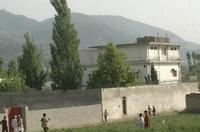-
Automatic license plate readers used to collect, store data on millions of Americans

Automatic license plate readers are the most widespread location tracking technology available to law enforcement. Mounted on patrol cars or stationary objects like bridges, they snap photos of every passing car, recording their plate numbers, times, and locations. At first the captured plate data was used just to check against lists of cars law enforcement hoped to locate for various reasons (to act on arrest warrants, find stolen cars, etc.). Increasingly, however, all of this data is being fed into massive databases that contain the location information of many millions of innocent Americans stretching back for months or even years.
-
-
U.S. research universities subject to sustained cyberattack campaign by China
Leading U.S. research universities report that they have been subject to millions of Chinese hacking attempts weekly. The Chinese are aware that universities, and the professors who do research under the schools’ auspices, receive thousands of patents each year in areas such as prescription drugs, computer chips, fuel cells, aircraft, medical devices, food production, and more. The Chinese government-sponsored cyberattacks on American research universities are an expansion of efforts by China to steal information that has commercial, political, or national security value.
-
-
OBL: Hiding in plain sight

Osama bin Laden had been living in his walled Abbottabad compound for nearly ten years, within sight of an elite Pakistani military academy, and gone completely unnoticed. According to a scathing official Pakistani report, the incompetence and negligence of Pakistan’s Inter-Services Intelligence (ISI) failed to realize that the world’s most sought-after terrorist leader had been living in Pakistan, until he was killed in a night-time raid by U.S. Navy SEALs on 2 May 2011.
-
-
Cybersecurity funding increasing despite sequestration
Sequestration-mandated cuts continue, but more money will continue to go to cybersecurity, and job opportunities in the field will continue to grow. The Defense Department intends to spend $23 billion on cybersecurity over the next five years, and that it is seeking more than $4.6 billion for cybersecurity in 2014 fiscal year, an 18 percent jump from the 2013 fiscal year.
-
-
Search begins for Napolitano’s successor

DHS is the third-largest federal department, with a budget of $48 billion and a staff of more than 240,000. The names circulating as possible replacements for the departing Janet Napolitano include current and former lawmakers, police chiefs, and people with security experience.
-
-
Giuliani says political correctness hampers fight against domestic terrorists
The Department of Defense initially described Army Major Nidal Hassan’s Fort Hood shooting spree as “terrorism,” but quickly changed that definition to “workplace violence.” Testifying before a congressional panel, former New York City mayor Rudy Giuliani criticized DoD’s decision, and political correctness more generally, saying that “You can’t fight an enemy you don’t acknowledge.”
-
-
Lawmakers uneasy about Smithfield’s acquisition by a Chinese food giant
Lawmakers last week questioned Smithfield Foods CEO Larry Pope about the proposed acquisition of the pork producer by China’s largest meat producer. Lawmakers are worried that the acquisition will negatively affect U.S food supply and agricultural producers.
-
-
Consolidation expected among large cybersecurrity contractors
Europe’s largest defense company, BAE Systems, says the number of military contractors selling data protection services to governments will decrease as clients demands for ever-more-sophisticated products increase.
-
-
Napolitano leaving DHS post
DHS secretary Janet Napolitano announced earlier today that she would be leaving her post in early September to become president of the University of California system. Napolitano served as DHS chief during a contentious and event-filled period which saw her department dealing with issues such as immigration, border security, the Boston bombing, Superstorm Sandy, and deadly tornadoes in the Midwest.
-
-
House GOP caucus grapples with immigration issue
During a closed-door meeting of the House Republican caucus on Wednesday, House Speaker John Boehner (R-Ohio) and Representative Paul Ryan (R-Wisconsin) urged fellow GOP lawmakers to pass an immigration bill. Boehner reiterated his position that no immigration bill will be brought to the House floor without the support of the majority of the House GOP caucus. Participants in the meeting all agreed that they did not trust the Obama administration to enforce either immigration laws or border security provisions.
-
-
The tax contributions of undocumented immigrants to states and localities
Opponents of immigration reform argue that undocumented immigrants would be a drain on federal, state, and local government resources if granted legal status under reform. It is also true, however, that the 11.2 million undocumented immigrants living in the United States are already taxpayers, and that their local, state, and federal tax contributions would increase under reform.
-
-
U.S. defense industry fights budget cuts
The U.S. defense industry has been fighting budget cuts for two years now. The industry’s effort to prevent sequestration from taking effect has failed, but there is optimism in defense circles that this time the effort may well succeed.
-
-
Russia: Syria rebels used sarin gas
Vitaly Churkin, Russia’s UN ambassador, announced at a UN news conference Tuesday that scientific analysis by Russian labs of a suspected chemical weapons attack in Syria on 19 March concluded the attack probably had been carried out by rebels using sarin nerve gas of “cottage industry” quality. He said the gas was delivered by a crudely made missile.
-
-
Gen. Dempsey: Syria could be a “10-year issue”

The U.S. top soldier said the United States is facing a “10-year issue” in Syria: “if we fail to think about [the Syrian issue] as a 10-year regional issue, we could make some mistakes,” General Martin Dempsey, chairman of the Joint Chiefs of Staff, said.
-
-
House speaker clarifies position on immigration reform
House Speaker John Boehner (R-Ohio) told reported on Monday that improvements in border security must be “in place” before a pathway to immigration is to begin. Boehner will head a special meeting of the House Republican Conference today to debate immigration reform.
-
More headlines
The long view
What Does Netflix’s Drama “Adolescence” Tell Us About Incels and the Manosphere?
While Netflix’s psychological crime drama ‘Adolescence’ is a work of fiction, its themes offer insight into the very real and troubling rise of the incel and manosphere culture online.
A Shining Star in a Contentious Legacy: Could Marty Makary Be the Saving Grace of a Divisive Presidency?
While much of the Trump administration has sparked controversy, the FDA’s consumer-first reforms may be remembered as its brightest legacy. From AI-driven drug reviews to bans on artificial dyes, the FDA’s agenda resonates with the public in ways few Trump-era policies have.
The Center Can Hold — States’ Rights and Local Privilege in a Climate of Federal Overreach
As American institutions weather the storms of executive disruption, legal ambiguity, and polarized governance, we must reexamine what it means for “the center” to hold.
How to Reverse Nation’s Declining Birth Rate
Health experts urge policies that buoy families: lower living costs, affordable childcare, help for older parents who want more kids
Foundation for U.S. Breakthroughs Feels Shakier to Researchers
With each dollar of its grants, the National Institutes of Health —the world’s largest funder of biomedical research —generates, on average, $2.56 worth of economic activity across all 50 states. NIH grants also support more than 400,000 U.S. jobs, and have been a central force in establishing the country’s dominance in medical research. Waves of funding cuts and grant terminations under the second Trump administration are a threat to the U.S. status as driver of scientific progress, and to the nation’s economy.
The True Cost of Abandoning Science
“We now face a choice: to remain at the vanguard of scientific inquiry through sound investment, or to cede our leadership and watch others answer the big questions that have confounded humanity for millennia —and reap the rewards.”
